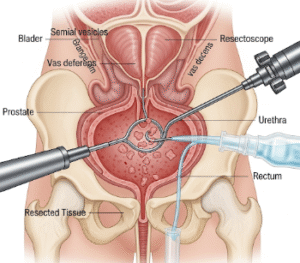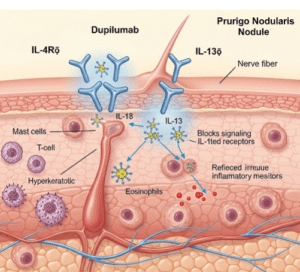Overview
Trigeminal Neuralgia (TN) is a chronic pain condition affecting the trigeminal nerve, which carries sensation from the face to the brain. It is characterized by sudden, severe, and recurrent facial pain that can significantly affect quality of life. The pain is often described as electric shock-like, stabbing, or burning, and can be triggered by simple activities such as chewing, talking, brushing teeth, or even a light touch to the face. South Korea provides advanced neurological care for TN, including precise diagnostic imaging, medication management, and innovative surgical options to relieve pain and improve daily functioning.
What is Trigeminal Neuralgia?
Trigeminal Neuralgia is a disorder of the fifth cranial nerve (trigeminal nerve) that results in episodic facial pain. The condition is typically unilateral, affecting one side of the face, and may involve one or more branches of the nerve. TN can be classified into two types:
- Classical TN: Often caused by compression of the trigeminal nerve by a blood vessel near the brainstem, leading to demyelination and hyperactive pain signaling
- Secondary TN: Resulting from underlying conditions such as multiple sclerosis, tumors, or arteriovenous malformations
South Korean neurologists use high-resolution MRI and other imaging techniques to identify nerve compression or structural causes and to guide treatment planning.
Symptoms
The hallmark symptom of Trigeminal Neuralgia is intense, paroxysmal facial pain, which can include:
- Sudden, severe, electric shock-like pain: Often lasting seconds to minutes
- Recurrent attacks: Frequency can range from several times a day to a few episodes per month
- Trigger zones: Light touch, shaving, chewing, brushing teeth, or exposure to wind may provoke attacks
- Unilateral facial involvement: Typically affects one side of the face, most commonly the cheek or jaw
- Pain-free intervals: Patients may experience periods without discomfort, especially in early stages
- Emotional distress: Anxiety, depression, or fear of triggering pain episodes
Early recognition of these symptoms in Korean clinics ensures timely management and prevention of chronic pain progression.
Causes
Trigeminal Neuralgia is primarily caused by nerve irritation or damage, which may include:
- Vascular compression: A blood vessel pressing on the trigeminal nerve at the brainstem
- Demyelinating diseases: Such as multiple sclerosis, which damage the protective covering of the nerve
- Tumors or cysts: Space-occupying lesions affecting the nerve pathway
- Facial trauma or surgery: Injury to the trigeminal nerve from accidents or procedures
- Idiopathic causes: In some cases, no identifiable cause is found
Identifying the underlying cause in South Korea allows for targeted therapies that address both pain and its source.
Risk Factors
Several factors increase the likelihood of developing Trigeminal Neuralgia:
- Age over 50 years, with increasing prevalence in older adults
- Female gender, which appears more susceptible to classical TN
- History of multiple sclerosis or other demyelinating disorders
- Blood vessel abnormalities that compress cranial nerves
- Previous facial injury or surgery affecting the trigeminal nerve
Awareness of these risk factors helps neurologists in Korea monitor at-risk populations and implement early interventions.
Complications
Trigeminal Neuralgia can significantly affect daily life and health:
- Severe chronic pain: Can lead to avoidance of eating, speaking, or social interactions
- Malnutrition: Avoidance of meals due to pain during chewing
- Depression and anxiety: Emotional distress due to unpredictable pain attacks
- Medication side effects: Long-term use of anticonvulsants may cause dizziness, drowsiness, or liver toxicity
- Secondary infections or dental issues: Neglect of oral hygiene due to pain during tooth brushing
Early treatment in Korea can minimize these complications and improve quality of life for patients.
Prevention
While idiopathic TN cannot always be prevented, certain measures may reduce risk or severity:
- Avoiding facial trauma through safety precautions
- Prompt treatment of underlying neurological or vascular conditions
- Regular follow-up for patients with multiple sclerosis or other demyelinating disorders
- Awareness of early symptoms to seek timely medical evaluation
South Korean neurology centers emphasize preventive strategies for high-risk patients to reduce the frequency and intensity of TN attacks.
Treatment Options in Korea
Korean hospitals provide comprehensive treatment for Trigeminal Neuralgia, combining medication, minimally invasive procedures, and advanced surgery:
Diagnosis:
- Clinical evaluation of pain patterns and triggers
- High-resolution MRI or MR angiography to detect vascular compression
- Neurological assessment to differentiate TN from other facial pain syndromes
Medical Treatments:
- Anticonvulsants: Carbamazepine and oxcarbazepine as first-line therapy to reduce nerve excitability
- Other medications: Gabapentin, pregabalin, or baclofen for pain control
- Short-term pain management: Analgesics or nerve blocks in acute exacerbations
Surgical and Interventional Treatments:
- Microvascular decompression (MVD): Relieves nerve compression by separating the blood vessel from the trigeminal nerve
- Gamma Knife radiosurgery: Focused radiation to reduce nerve hyperactivity, suitable for high-risk surgical patients
- Percutaneous procedures: Rhizotomy or balloon compression to selectively damage pain fibers and reduce attacks
Rehabilitation and Support:
- Counseling and psychological support for chronic pain management
- Education on lifestyle modifications to avoid triggers
- Regular follow-up to monitor treatment response and adjust therapy
- Multidisciplinary care including neurology, pain management, and rehabilitation specialists
By integrating advanced diagnostics, medical management, and surgical innovations, South Korean healthcare providers offer effective relief and long-term management for Trigeminal Neuralgia patients.













